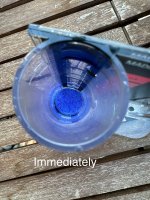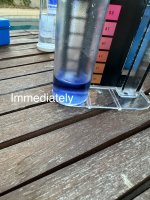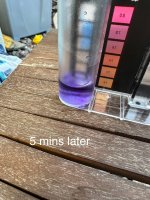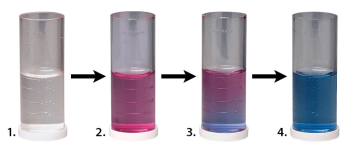- Mar 29, 2024
- 14
- Pool Size
- 13000
- Surface
- Plaster
- Chlorine
- Salt Water Generator
- SWG Type
- Saline Generating Systems Breeze 540
Hi all,
New TFP disciple here.
I use the Taylor K-2006 kit. When I run the test for calcium hardness, even if I add 5 or 8 drops of the hardness reagent first, I still get the fading (purple) endpoint.
13k gallon pool, 4 weeks ago demoed old plaster and replaced with PebbleTec, thus recently filled with fresh water (Phoenix, AZ). No algaecides etc added. Per Leslie’s, no iron or copper to speak of.
I’ve looked at various guides online and YouTube videos that explain how to avoid the fading endpoint, and I follow the instructions to a t. Yet, I always get the purple endpoint.
Any tips?
Thanks y’all!
New TFP disciple here.
I use the Taylor K-2006 kit. When I run the test for calcium hardness, even if I add 5 or 8 drops of the hardness reagent first, I still get the fading (purple) endpoint.
13k gallon pool, 4 weeks ago demoed old plaster and replaced with PebbleTec, thus recently filled with fresh water (Phoenix, AZ). No algaecides etc added. Per Leslie’s, no iron or copper to speak of.
I’ve looked at various guides online and YouTube videos that explain how to avoid the fading endpoint, and I follow the instructions to a t. Yet, I always get the purple endpoint.
Any tips?
Thanks y’all!





